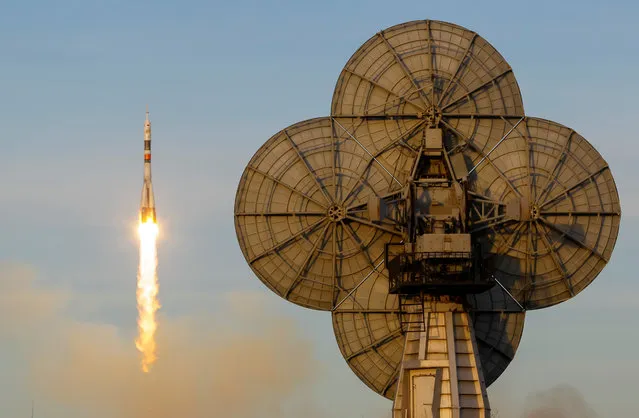
The Soyuz MS-11 spacecraft carrying the crew formed of David Saint-Jacques of Canada, Oleg Kononenko of Russia and Anne McClain of the U.S. blasts off to the International Space Station (ISS) from the launchpad at the Baikonur Cosmodrome, Kazakhstan December 3, 2018. (Photo by Shamil Zhumatov/Reuters)
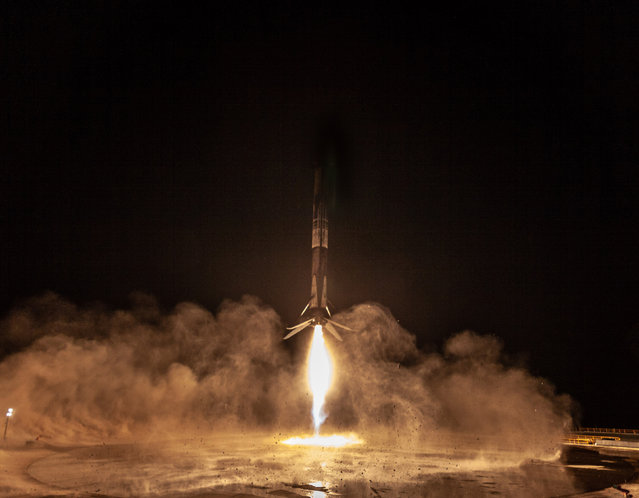
SpaceX Falcon 9 rocket' s first stage landed back at Vandenberg Air Force Base in California on October 7, 2018 after the launch of the SAOCOM 1A satellite. It was the first time a Falcon 9 first stage was landed back at Vandenberg Air Force Base. (Photo by UPI/Barcroft Images)
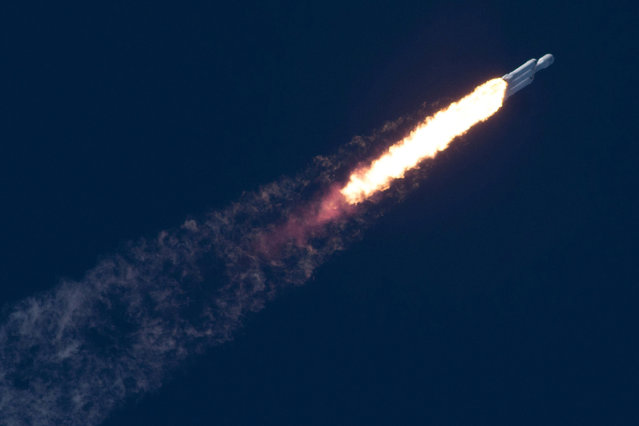
A SpaceX Falcon Heavy rocket climbs towards space after lifting off from historic launch pad 39-A at the Kennedy Space Center in Cape Canaveral, Florida, U.S., February 6, 2018. (Photo by SpaceX/Handout via Reuters)
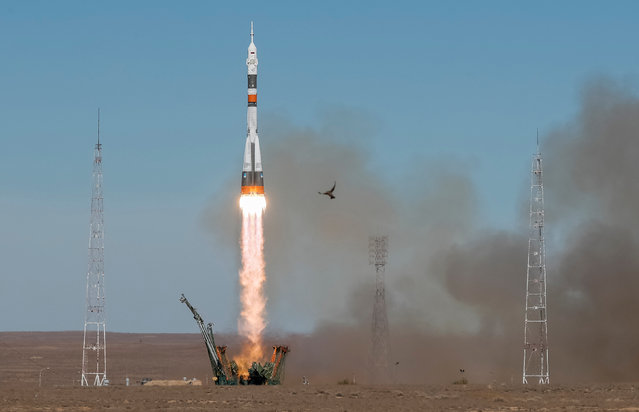
The Soyuz MS-10 spacecraft carrying the crew of astronaut Nick Hague of the U.S. and cosmonaut Alexey Ovchinin of Russia blasts off to the International Space Station (ISS) from the launchpad at the Baikonur Cosmodrome, Kazakhstan October 11, 2018. (Photo by Shamil Zhumatov/Reuters)
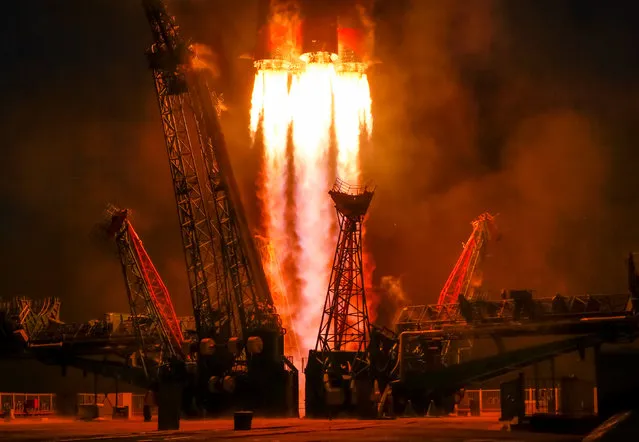
The Soyuz MS-11 spacecraft carrying the crew formed of David Saint-Jacques of Canada, Oleg Kononenko of Russia and Anne McClain of the U.S. blasts off to the International Space Station (ISS) from the launchpad at the Baikonur Cosmodrome, Kazakhstan December 3, 2018. (Photo by Shamil Zhumatov/Reuters)
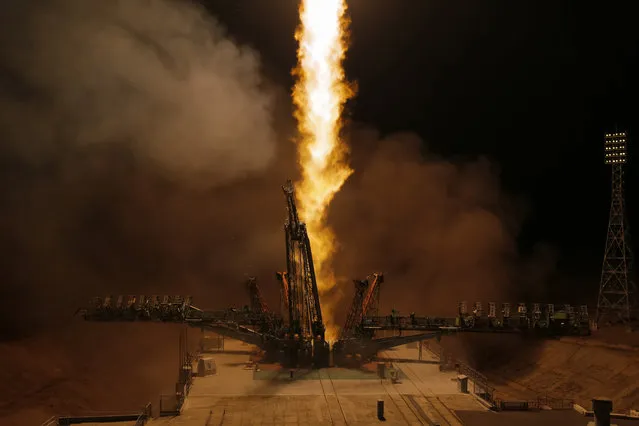
The Soyuz-FG rocket booster with Soyuz MS-12 space ship carrying a new crew to the International Space Station, ISS, blasts off at the Russian leased Baikonur cosmodrome, Kazakhstan, early Friday, March 15, 2019. The Russian rocket carries U.S. astronauts Christina Hammock Koch, Nick Hague, and Russian cosmonaut Alexey Ovchinin. (Photo by Dmitri Lovetsky/AP Photo)
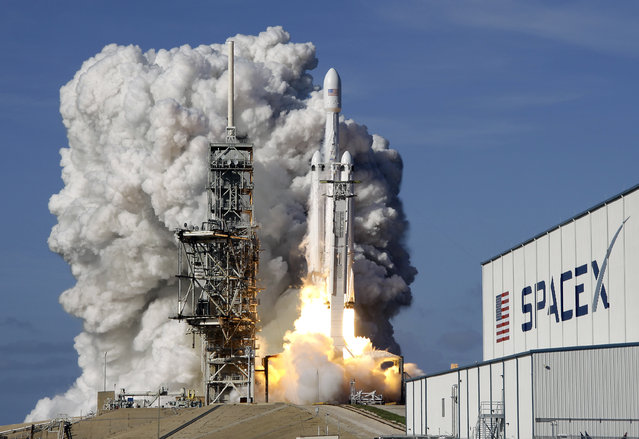
A Falcon 9 SpaceX heavy rocket lifts off from pad 39A at the Kennedy Space Center in Cape Canaveral, Fla., Tuesday, February 6, 2018. The Falcon Heavy, has three first-stage boosters, strapped together with 27 engines in all. (Photo by John Raoux/AP Photo)
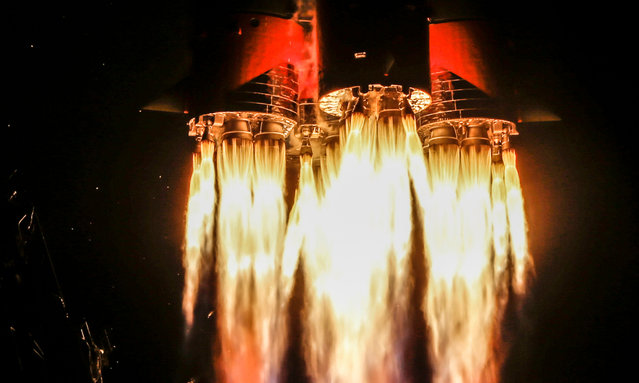
Soyuz MS-12 spacecraft with crew members of Expedition 59/60 Russian cosmonaut Alexey Ovchinin, NASA astronauts Christina Koch and Nick Hague lifts off from the launch pad at the Russian leased Baikonur cosmodrome, Kazakhstan, 15 March 2019. Hague, Koch, and Ovchinin will spend six-and-a-half months living and working aboard the International Space Station. (Photo by Sergei Ilnitsky/EPA/EFE)
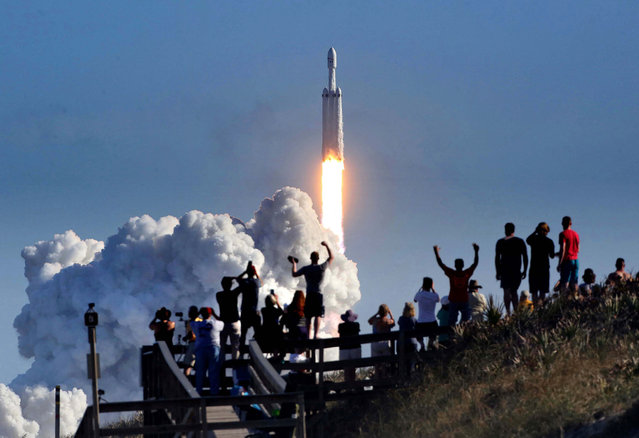
The crowd cheers at Playalinda Beach in the Canaveral National Seashore, just north of the Kennedy Space Center, during the succesful launch of the SpaceX Falcon Heavy rocket on February 6, 2018. Playalinda is one of closest public viewing spots to see the launch, about 3 miles from the SpaceX launchpad 39A. (Photo by Joe Burbank/TNS via ZUMA Wire)
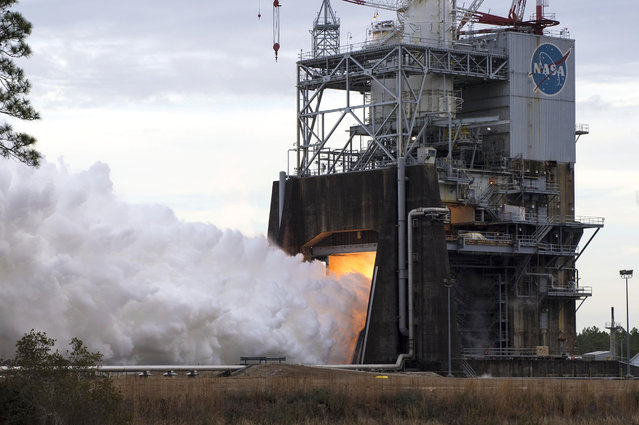
NASA followed up the first RS-25 test of 2018 with a second hot fire of the Space Launch System (SLS) engine on February 1 at Stennis Space Center near Bay St. Louis, Mississippi. The full-duration, 365-second certification test of another RS-25 engine flight controller on the A-1 Test Stand at Stennis comes about two weeks after a Jan. 16 hot fire. The test marks completion of green run testing for all four of the new RS-25 engine flight controllers needed for the second flight of NASA’s SLS rocket. NASA is building SLS to send humans to such deep-space destinations as the moon and Mars. The Exploration Mission-1 (EM-1) flight will test the new rocket and carry an uncrewed Orion spacecraft into space beyond the moon. Exploration Mission-2 (EM-2) will be the first flight to carry humans aboard the Orion spacecraft, returning astronauts to deep space for the first time in more than 40 years. (Photo by NASA)
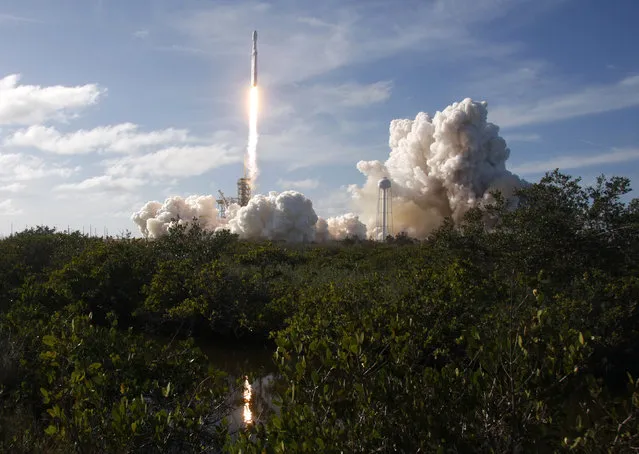
A SpaceX Falcon Heavy rocket lifts off from historic launch pad 39-A at the Kennedy Space Center in Cape Canaveral, Florida, February 6, 2018. (Photo by Thom Baur/Reuters)
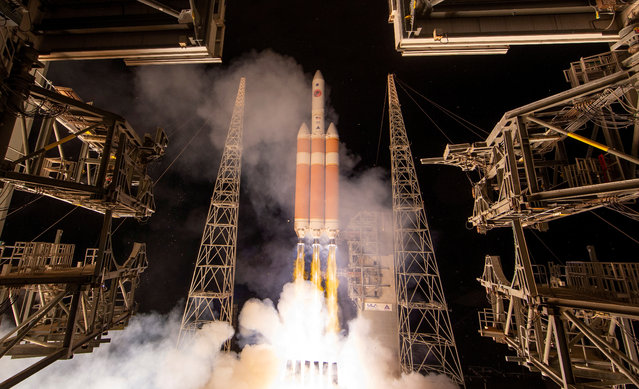
The United Launch Alliance Delta IV Heavy rocket launches NASA's Parker Solar Probe to the Sun at Cape Canaveral, Florida on August 12, 2018. (Photo by NASA via Reuters)
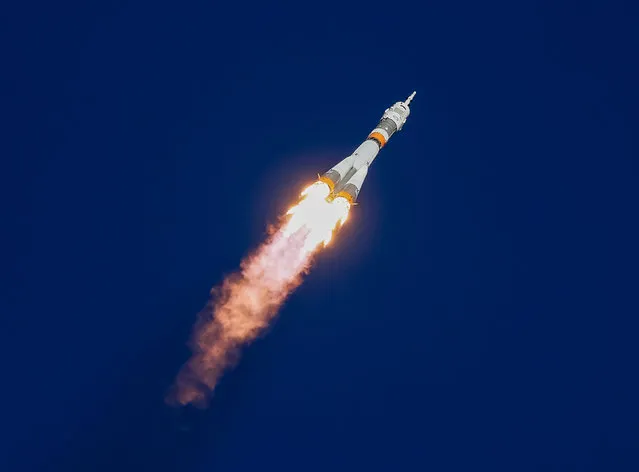
The Soyuz MS-10 spacecraft carrying the crew of astronaut Nick Hague of the U.S. and cosmonaut Alexey Ovchinin of Russia blasts off to the International Space Station (ISS) from the launchpad at the Baikonur Cosmodrome, Kazakhstan October 11, 2018. (Photo by Shamil Zhumatov/Reuters)
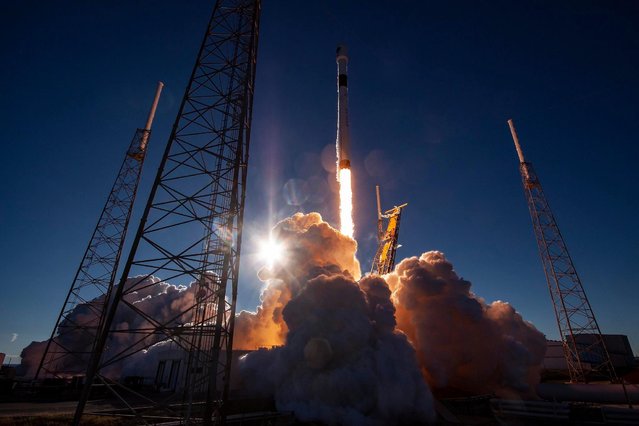
A handout photo made available by SpaceX shows the Falcon 9 reusable rocket at liftoff, while carrying the US Air Force's Global Positioning System III space vehicle into orbit, at the Space Launch Complex in Cape Canaveral, Florida, USA, 23 December 2018. The launch was the first national security mission for SpaceX, a private space transportation company founded by Elon Musk. (Photo by EPA/EFE/SpaceX)
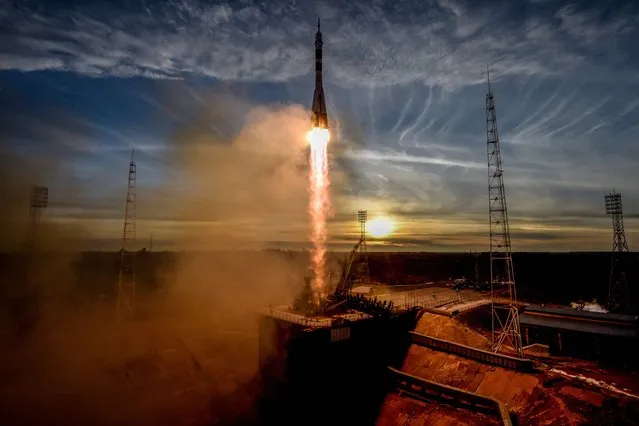
A Soyuz MS-11 rocket carrying Russian, American and Canadian astronauts takes off from the Baikonur Cosmodrome on December 3, 2018 before reached orbit later, the first manned mission since a failed launch in October. (Photo by Kirill Kudryavtsev/AFP Photo)
11 Apr 2019 00:03:00,
post received
0 comments
